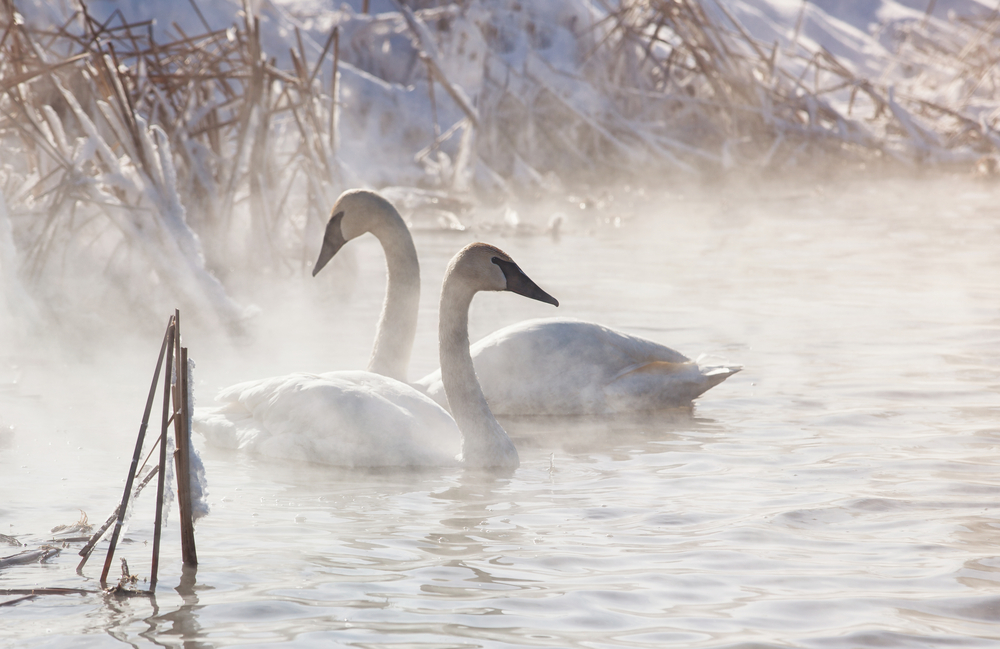Trumpeter Swan, Cygnus buccinator
Bill Rowe
Unknown in Missouri for most of the 20th century, the Trumpeter Swan is now a poster child for successful conservation. Let’s back way up: Before the Civil War—say, the 1840’s—you could have found Trumpeter Swans nesting here in our state, as well as across much of the northern Midwest and the west, plus Canada and Alaska. By 1900, it was virtually gone from the Lower 48, with only a few remnants in remote, wild areas; but with protections in place from the 1920’s on, its numbers began to rebound. More recently, it was reintroduced at midwestern refuges in Minnesota, Wisconsin, Iowa, and other states, and these nuclei of nesting birds have expanded and boosted the total population toward the neighborhood of 20,000. Trumpeters are now becoming a steadily commoner sight at wetlands around the continent, whether nesting or wintering, and a commoner sound as well, with their distinctive resonant honking. Fun fact: In a “biggest North American bird” contest, this species will win if you define “big” in terms of weight (up to 25 lb or more) rather than height or wingspread (can you guess those winners?).
IDENTIFICATION: Adults are pure white with a large, triangular, all-black bill; juveniles are grayish with a partly pink bill that turns black over the winter. The only similar birds are our other two swans: The non-native Mute Swan has an orange bill with a black knob. The smaller Tundra Swan (native, breeding in the Arctic) has a black bill like the Trumpeter, but it is more concave, and the black facial skin doesn’t connect with the eye as much as on a Trumpeter, leaving the eye more distinct on the face. Many Tundras have a yellow “teardrop” just in front of the eye—a sure-fire field mark—and a size comparison side by side will also identify them.
ST. LOUIS STATUS: A regular winter resident at Riverlands and sometimes other wetlands, and in nearby farm fields where it grazes and rests. These wintering birds come to us from the breeding sites to our north, where they were reintroduced; this pattern started with a few birds around 1990 and now involves many hundreds.
Learn more and listen to the calls of Trumpeter Swans here.




